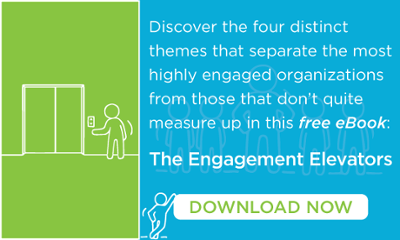
In business, as in life, effective communication is possibly the most important component which determines our success or failure. Accordingly, entire sections of libraries and bookstores are devoted to the subject.
No plan of action, inspirational idea, or thoughtful opinion can be fully appreciated unless it's effectively communicated. Unfortunately, we sometimes communicate so poorly that George Bernard Shaw was led to observe that, “The single biggest problem in communication is the illusion that it has taken place”.
How we communicate, or fail to, can determine whether our team feels engaged and motivated, or left hanging out there on their own. So, perhaps we need to evaluate whether we're truly communicating effectively in some specific and critical areas when it comes to our team members.
 Communication mistakes leaders often make
Communication mistakes leaders often make
1. Not engaging with employees on a personal level.
2. Not creating employee recognition opportunities.
3. Failing to listen.
4. Not offering feedback.
5. Not asking for input.
Effective communication at the office starts with something as simple as asking how your employees are doing in individual, one-on-one conversation. And not how they’re doing on a performance metric; how they're doing emotionally. What encouragement or direction can you offer? If you want your employees to be engaged in the process, you need to be engaged with them. And as a team leader, it's your responsibility to initiate these conversations.
Equally important in the example above is how we listen. We can’t just go through the motions. If we're going to expect sellers to share meaningful thoughts, ideas, and emotions with us, we must honor their trust with serious, thoughtful responses.
Meaningful feedback is the critical balancing half of effective, two-way communication. This does not mean that we hold their hands and cry about how tough the job is. Rather, be a sounding board who can truly relate and then objectively offer ideas on how to productively cope with whatever challenges they're facing.
Are you creating an environment that allows your sellers to shine?
All too often we find opportunities for criticism or correction. It’s the nature of the business. But balanced communication requires that we take opportunities to praise our team members both publicly and privately even if we must create those opportunities.
Think of all the metrics you employ to measure successful activity and how you might single out team members for their performance in specific areas beyond simple budget achievement. If sincere, this praise can motivate and will avoid the negative pitfall of being perceived as one who never offers recognition.
The daily demands of the job often interfere with our communication. We often just don’t feel that we have time for extraneous discussion. But simply giving direction without asking for feedback will, over time, be de-motivating to your staff.
People need to know that they're valued and one way to communicate that is to take the time to ask for their input. Rather than just announcing a new sales initiative, for instance, consider offering several options and then asking for ideas on which might work best or how one might made more effective. As always, this sort of conversation only has value if you sincerely listen and consider the ideas offered, incorporating those that make sense.
Communication is Key
Positive and effective communication is a requirement for any business leader. It’s also the skill that employees feel many executives need to work on the most. So, don’t be discouraged if your traditional and virtual communication abilities need some refinement. Now is the time for you to grow, develop, and improve!









LEAVE A COMMENT